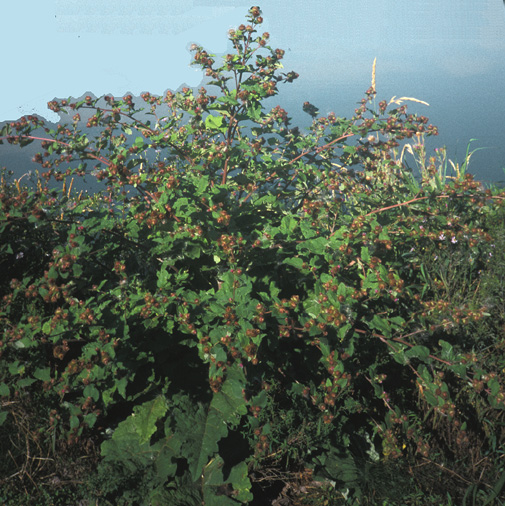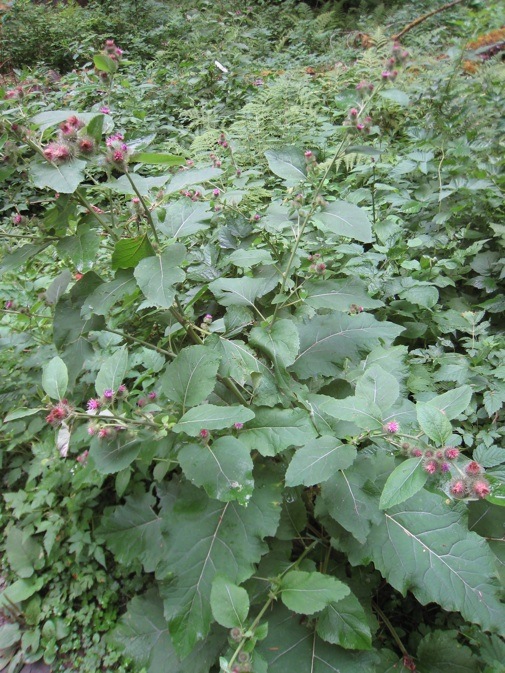
|

|
| Burdock; Arctium minus (Hill) Bernh., s.l. |
Sunflower Family; COMPOSITÆ (ASTERACEÆ)
|
| Most weeds are annual, biennial or perennial herbs. Burdock has the little known yet precise designation monocarpic herb. This
means a seedling grows for a varying period of years, usually two to four, until its root has stored enough energy to produce a flower stem.
The plant dies only after flowering. In a shady, dry location Burdock must wait a long time. Rich soil, well-bathed in sunshine, lets
Burdock send up its huge flower stem in its second year of growth. Other monocarpic herbs are Angelica and Giant Hogweed. The latter is
Seattle's only weed of greater size than the best Burdock specimens. |
| From Eurasia, Burdock is the only species in its genus that is common wild in the Seattle area. It tolerates shade and grows in
most soil types, but does best in rich ground. It is robust, coarse, strong and indomitable. Its root can be nearly two inches thick, two feet
long, and weigh over 11/2 pounds. Broad, floppy, triangular leaves, in texture and color like those of the ubiquitous Himalaya Blackberry
vine, can be 20 inches long, supported by fibrous, hollow stems over two feet long. The flowers, small for such a monstrously big plant, are
pink-purplish like Canada Thistle's, and appear from June to October, on many branches. The plant can grow nine feet tall. |
| Its famous burs are seedheads an inch or so wide that stick to clothes, hair, skin and whatnot, with remarkable ease. Children
delight in throwing them at each other; and dolls or other toys are easily woven of them. The burs account for most of the English names of
the plant: Cocklebur, Clot-bur, Beggar's Buttons, Cuckoo Buttons, Cuckold's Buttons. Two French-Canadian names having nothing to do
with burs are Devil's Tobacco and Wild Rhubarb. In the Language of Flowers, Burdock signifies "Importunity" and "Touch Me Not." |
The giant has some real value. The medicinal uses of its seeds, roots and various extracts cannot be detailed here, but Burdock
has been used to combat epilepsy, gout and arthritis. Of the abundant edibility information found in wild-edible-plant books, all that must
be stressed is the roots are the most valuable part, for they can be dug at an adequate stage for eating any time of year by experienced
foragers. A race of Greater Burdock (Arctium
Lappa L.) is grown for its root under the Japanese name "Gobo." Thus if you desire either to eat
Burdock as a food, or kill it as a weed, the key in both cases is to dig up its root.
|
Originally published as the Seattle Tilth newsletter Weed of the Month in September 1987, along with an illustration drawn by Jerri Geer.
Back |
|
|

